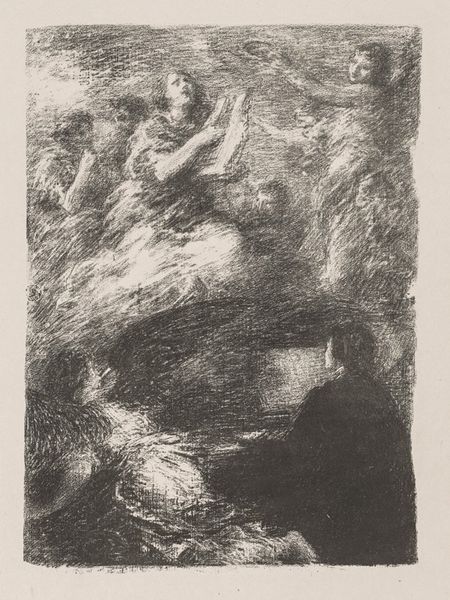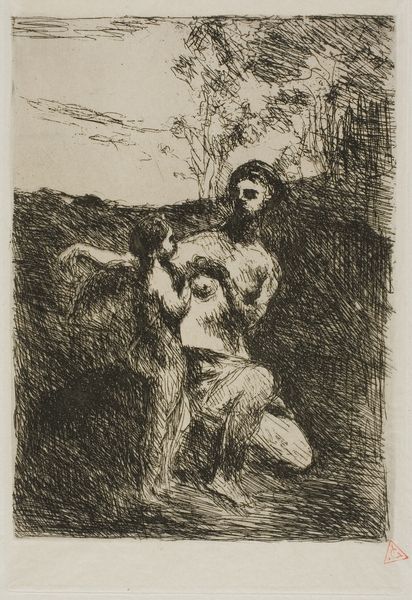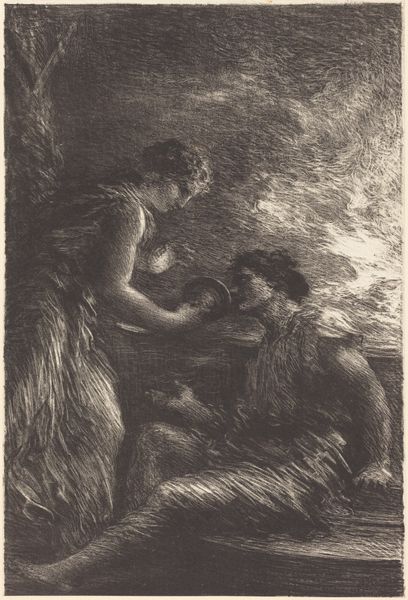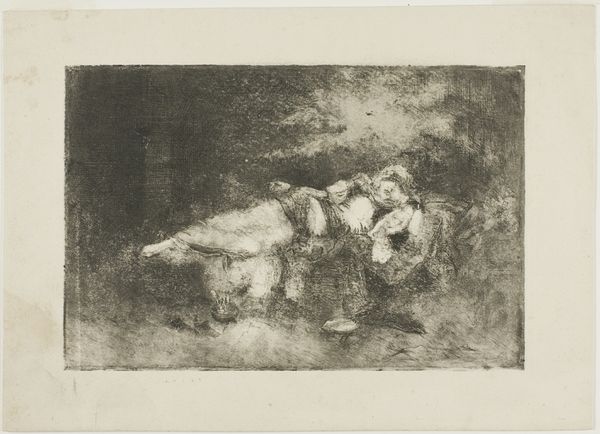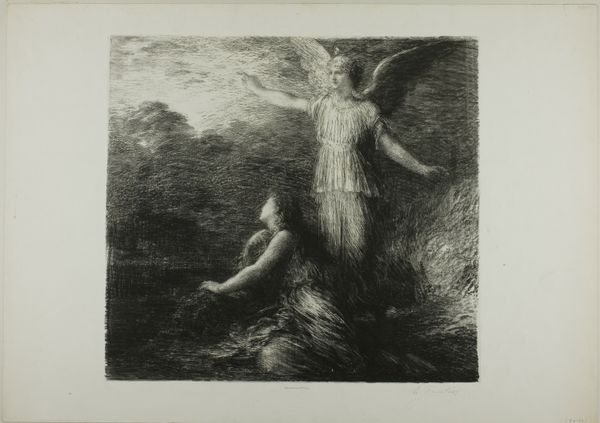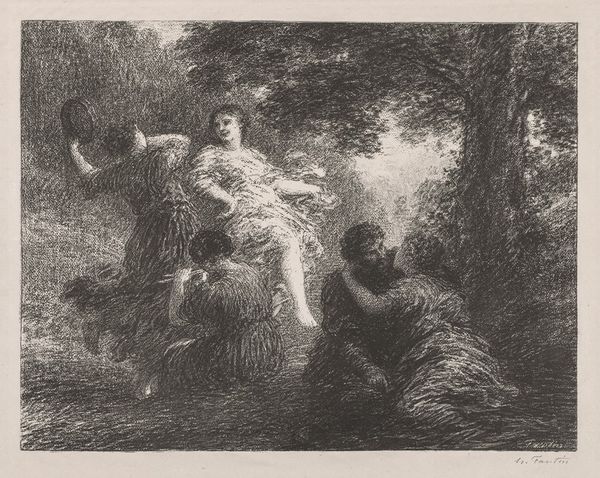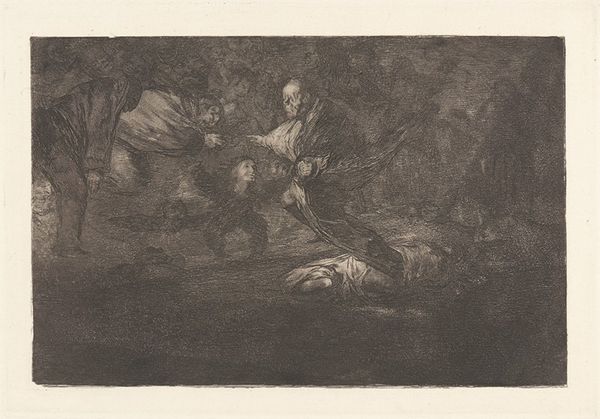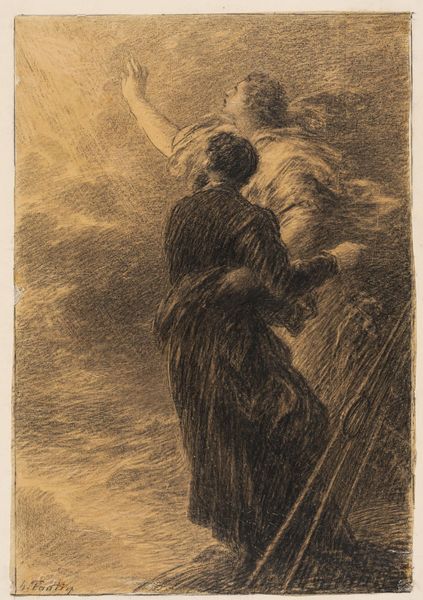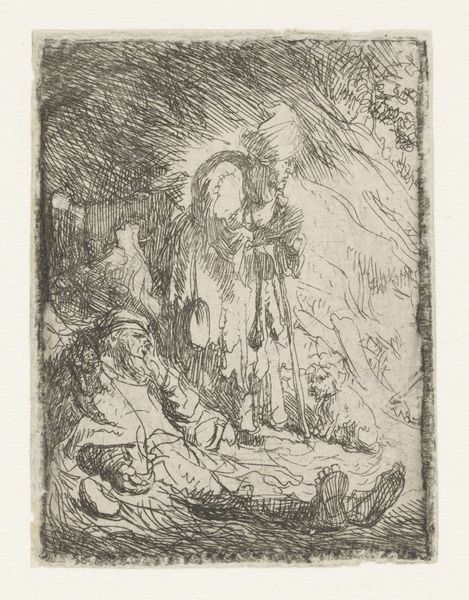
drawing, print, pencil, graphite
#
drawing
# print
#
pen sketch
#
pencil sketch
#
landscape
#
charcoal drawing
#
figuration
#
pencil drawing
#
pencil
#
symbolism
#
graphite
Copyright: Public Domain: Artvee
Editor: This is Henri Fantin-Latour's "Music and Poetry" from 1883. It looks like a print, probably done with graphite or pencil. The scene is so delicate and atmospheric. I am intrigued by the interplay of light and dark. What do you see in this piece? Curator: I see a powerful commentary on the commodification of art and the division of labor inherent in artistic production during the late 19th century. Consider the materials: graphite, pencil, accessible and easily reproducible. Fantin-Latour uses these "humble" materials to address supposedly "high" art themes. What does it mean to represent music and poetry—elevated art forms—through the mundane tools of drawing and printmaking? Editor: That's interesting! So you are suggesting that his choice of material, like pencil, comments on accessibility? Curator: Exactly! Furthermore, consider the printmaking process itself, which enables the mass production of an image, traditionally valued for its singularity. The symbolic content clashes with its method of making. Was Fantin-Latour aware of this contradiction and even, potentially, celebrating it? Editor: I never thought about the printmaking process adding to its meaning, or about his choices being a commentary. Curator: Material choices always have context and convey messages. The apparent simplicity might hide a sophisticated comment on how art functions within a rapidly industrializing society. So ask, how can art be both exclusive and democratic at the same time? Editor: Thinking about art in this context changes how I see the piece entirely. Now, I’m reflecting on the relationship between labor, cost, and artistic value. Curator: Yes. Questioning assumptions that link quality to scarce resources opens new possibilities for understanding "Music and Poetry."
Comments
No comments
Be the first to comment and join the conversation on the ultimate creative platform.

